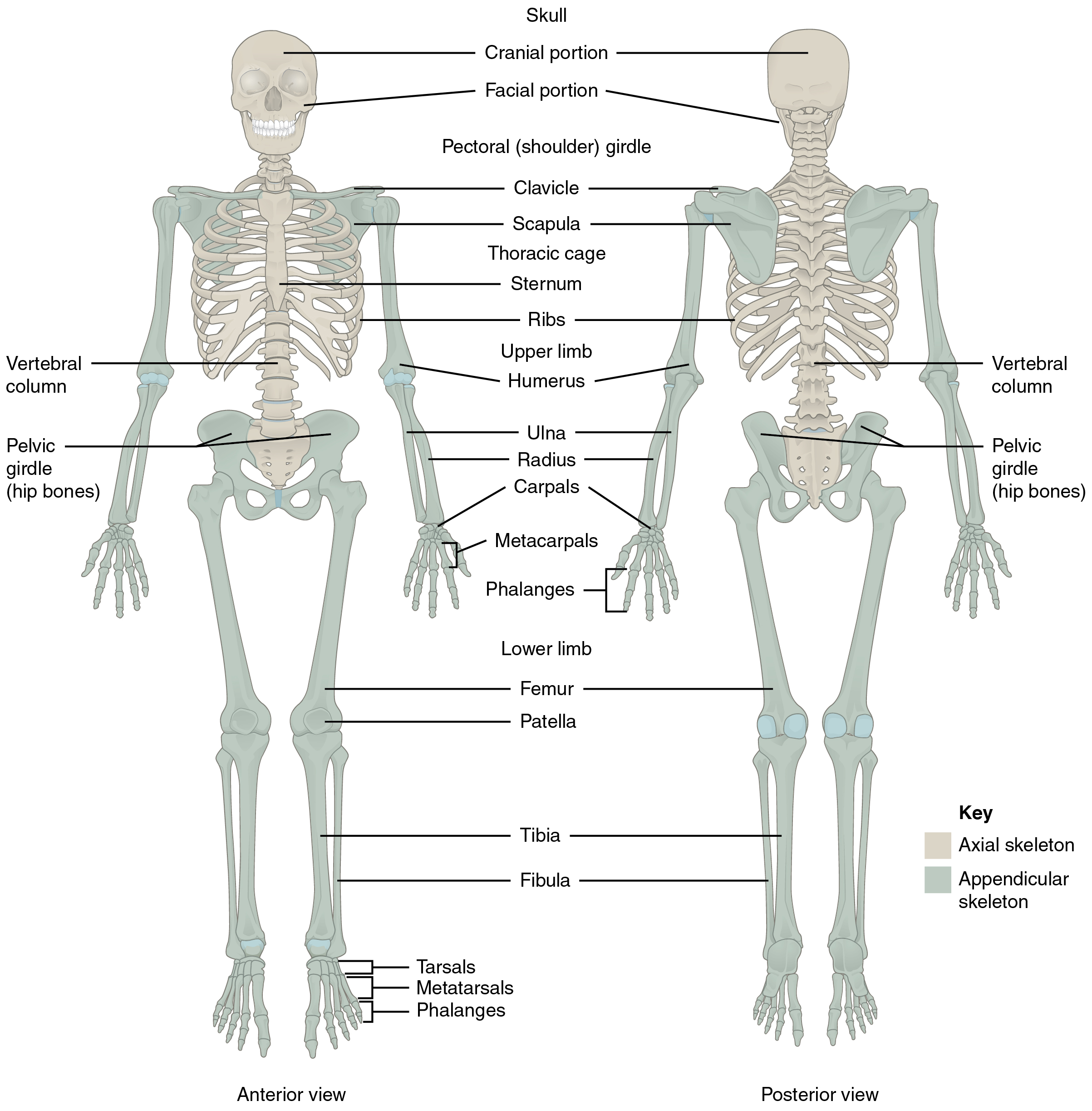Learn vocabulary terms and more with flashcards games and other study tools. Exaggerated curve of thoracic area hunchback.

Skeletal System Building A Medical Terminology Foundation
Kyphosis can strike at any age but it is most frequent in adolescents.

. List and describe the functions of the skeletal system Attribute the specific functions of the skeletal system to specific components or structures the skeletal system is a body system composed of bones cartilage ligaments and other tissues that perform the basic functions for the human body. In reality the living bones in our bodies contain active tissues that consume nutrients require a blood supply use oxygen and discharge waste products in metabolism and change shape or remodel in response to variations in mechanical stress. Region of the spine resulting in a hunchback appearance.
Kyphosis This word has two somewhat conflicting meanings. ___ is a general term used to describe an inflammatory process of a joint or joints. It is well adapted for the functions it must perform.
Term used to describe an overstretchedtorn muscle or tendon. The upper back or thoracic region of the spine has a. Start studying AP 1 Ch.
Start studying Skeletal System Test. It happens before birth during development. Humped curvature of the thoracic spine commonly called humpback or hunchback Lordosis an exaggerated anterior or inward curve of the lumbar spine also called swayback.
This basic structure allows muscles to move different parts of. An exaggeration or angulation of the posterior curve of the thoracic spine giving rise to the condition commonly known as humpback hunchback or Potts curvature. See it in 3D.
2 - Describe the general structure and components of the vertebral column. Dislocations fractures herniated disc infectious arthritis osteoarthritis osteoporosis. The bones of the human skeletal system are divided into an axial region and an appendicular region.
Differentiate a primary tumor from a metastatic bone tumor. General Features of BonesKnowing the terms used to describe a long bone will help you to understand the anatomy of the other types. An exaggerated thoracic curvature is called kyphosis hunchback in lay language.
Kyphoses much less commonly kyphus is a term used to describe the sagittal curvature of the thoracic spine. It is called a. Spinal condition caused by a LATERAL curvature of spinal column.
Etiology is poor posture or athletic training Lordosis. Results in a hunchback or humpback. Also an individual unit of the skeleton.
Learn vocabulary terms and more with flashcards games and other study tools. 4 - Describe the anatomical features common to all synovial joints the six types of synovial joints and the. It may be due to congenital anomaly disease tuberculosis syphilis malignancy or compression fracture.
Kyphosis also known as roundback or hunchback is a condition in which the spine in the upper back has an excessive curvature. This activity will be completed individually or in small groups. An IV is a system that continuously delivers medicines blood or other fluids into your body through a needle inserted into a vein.
The skeletal system is strong but lightweight. Abnormal curvature of the thoracic spine causes a hunchback appearance. Spina bifida - Spina bifida is what is known as a neural tube defect.
Name 3 Disorders or diseases related to the skeletal system in the Vertebral Column. An exaggerated posterior curvature of the thoracic spine that causes significant back pain and limited mobility. The Skeletal System-1 Objectives.
A1 - Structure of skeletal system Pre Revision Post Revision. Roundback or in the instance of a severe curve hunchback are terms used to describe the disease. Learn vocabulary terms and more with flashcards games and other study tools.
It is the precursor to most bone tissue root. Up to 24 cash back At the end of this section you will be able to. Chapter 8 1 - Identify the bones of the axial and appendicular skeletons.
Etiology is obesity pregnancy disk degeneration. It means both the normal curve of the upper back and it is sometimes used to describe an excess curvature a condition commonly called hunchback or. Skeleton or torso model.
The medical term used for swaybacked which affects the lumbar spine is a. A type of dense connective tissue that is found in the skeleton larynx trachea and bronchi. Learn vocabulary terms and more with flashcards games and other study tools.
Joint disorder classification of inflammation. 3 - Describe the criteria used to classify joints structurally and functionally. The skeletal system also provides an important form of attachments to the muscular systemBones and exoskeletons are hard and do not bend or move when muscles are flexed.
Use directional terms to precisely describe the location of structures on the human body. Start studying Skeletal System. Kyphosis Lordosis and Scoliosis.
Start studying Chapter 6 Skeletal Study Guide. This is often caused by poor. Skeletal System 1 1.
Hyperkyphosis of the thoracic spine hunchback or humpback Scoliosis is an abnormal lateral curvature of the vertebral column. The diagram shows a longitudinal section through a long bone. Spinal condition where the LUMBAR curvature is exaggerated -- results in swayback condition.
Chondr o diarthrosis. The skeleton is the framework that provides structure to the rest of the body and facilitates movement. Three abnormal curves Lordosis or swayback Kyphosis or hunchback Scoliosis.
Adaptations of the skeletal system to exercise long-term Response Explanation Increase in bone density and strength. Exaggerated curve of the lumbar area. A calcified form of dense connective tissue.
This means that the contraction of muscle cells will lead to the shortening of muscles while the bone retains its shape. Subdivision of the skeletal system Four normal curves.

Skeletal System Definition Function And Parts Biology Dictionary

Skeletal System Hst Iii Spring The Skeletal System Is Made Up Of Organs Called Bones Provides A Framework That Supports The Body S Muscles Fat Ppt Download

Detailed Explanation Of The Skeletal System Human Anatomy And Physiology Anatomy And Physiology Human Body Systems

0 Comments